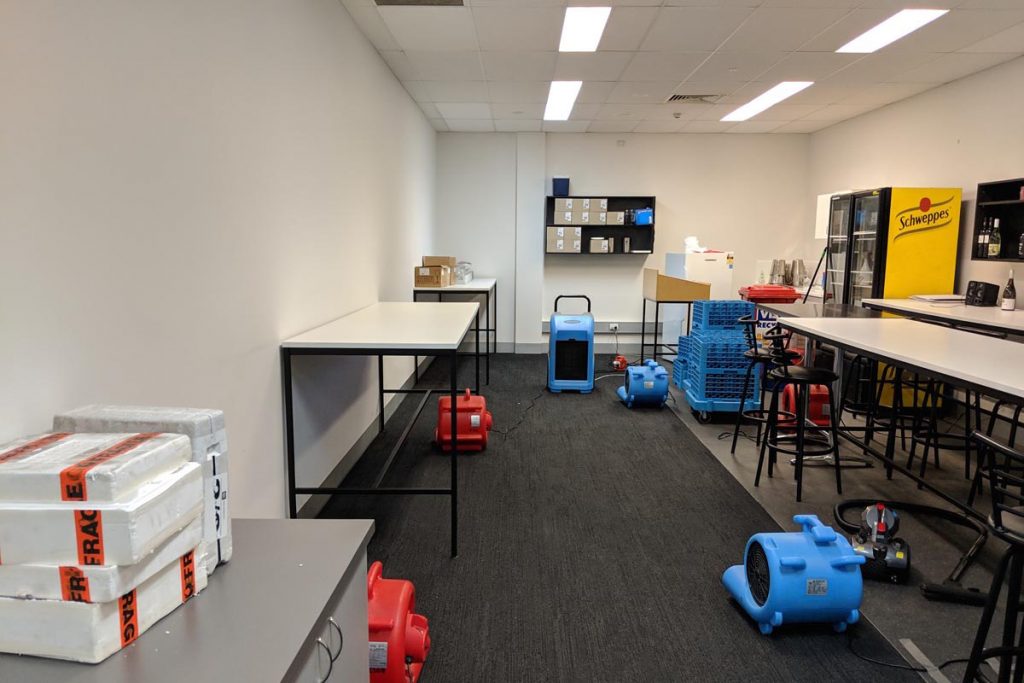5 Signs of Water Damage in Your Bathroom
Water damage may cause lasting effects on your property if left unattended, and one area particularly vulnerable is the bathroom due to plumbing, condensation and potential structural issues. The combination of constant moisture from wash basins, warm water from the shower, low ventilation, plumbing fixtures and frequent bathroom use makes it prone to various water-related issues. This is not always the case, however, and with proper ventilation fans and by keeping the moisture content low you can prevent issues forming. Recognising the signs of water damage early on is crucial to prevent further deterioration and expensive repairs. In this blog post, we’ll discuss five telltale signs of water damage in your bathroom that you should never ignore.
Damp or Discoloured Walls and Floors
One of the first signs of water damage in a bathroom is the presence of dampness or discolouration spots or areas on walls and floors. If you notice bubbling paint, peeling wallpaper or discoloured patches on otherwise consistent paint areas, it’s a good indication that water is seeping through or has built up within those materials. Moisture can cause structural damage, weaken the integrity of the surfaces, and create a breeding ground for mould and mildew if it’s left untreated. Don’t dismiss these signs as mere cosmetic issues; they could be early warning signs of a bigger problem and it’s best to get a professional out to inspect the areas and identify the likely cause.
Musty Odours
A persistent musty smell in your bathroom is often a sign of hidden water damage. Excess moisture provides an ideal environment for mould and mildew growth and their presence eventually will release unpleasant odours. Even if you can’t see any visible signs of water damage, a persistent musty smell suggests that there could be moisture accumulation behind walls, under the flooring or within the ceiling. Ignoring these odours can lead to more extensive damage over time and a professional water damage or mould technician will do moisture tests and thermal imaging to ensure there are no hidden issues. If there are no leaks, the likely culprit is condensation and adequate and frequent ventilation through opening the windows and installing effective ceiling fans will help in the long run.

Damaged or Stained Ceiling
If you notice any sagging, staining or patches of discolouration on the ceiling of your bathroom, it’s a telltale sign of water damage. Leaks from plumbing fixtures or pipes can seep into the ceiling, causing it to droop or discolour over time. This is particularly common in multi-story buildings, where a bathroom leak on the upper floor can affect the ceiling of the room below. Addressing this issue promptly is crucial to prevent further structural damage.
Damaged, Peeling or Loose Tiles
Bathroom tiles are designed to withstand moisture, but prolonged exposure to water can cause them to lose their adhesive properties. If you observe tiles that are peeling, cracking or becoming loose, it indicates that water has seeped underneath. The moisture weakens the bond between the tiles and the underlying surface, leading to visible damage. Promptly addressing the affected area can help prevent further water infiltration and the need for extensive repairs.
Malfunctioning Fixtures and Mould Growth
Water damage can also affect the functionality of bathroom fixtures. If you notice dripping faucets, a running toilet or a malfunctioning shower head, it could be time to get it inspected. The continuous moisture can corrode the internal components of these fixtures, leading to inefficiencies and leaks. Additionally, keep an eye out for mould growth in and around fixtures, as it signifies excessive moisture accumulation that isn’t ideal for the building materials.
Your bathroom may seem like a small space, but it’s susceptible to significant water damage if left unchecked. Being aware of the signs of water damage and taking prompt action can save you from costly repairs, mould growth and potential structural issues. If you notice any of the signs discussed in this blog, it’s essential to call in a professional plumber or water damage restoration expert to assess and address the issue. Remember, early detection and timely action are key to maintaining a healthy and functional bathroom in your home.

